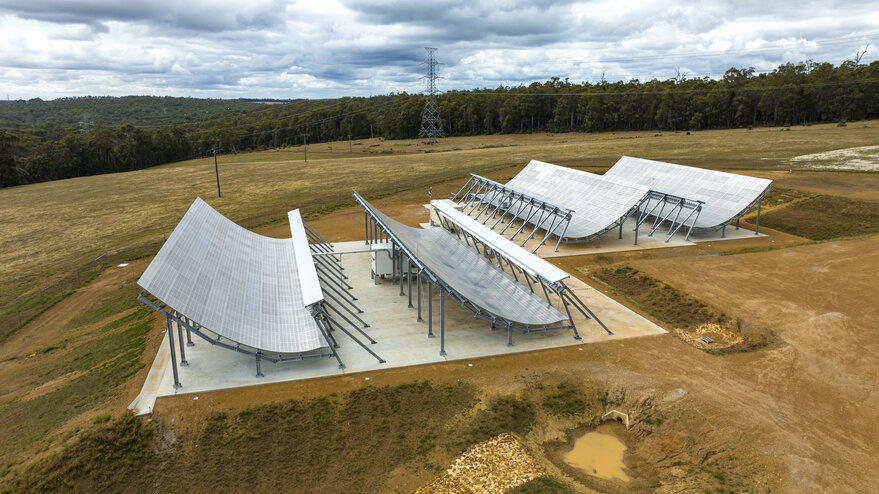SAN FRANCISCO – LeoLabs announced plans June 13 to build a new type of radar under a $1.245 million AFWERX contract.
The S-band 2-D Direct Radiating Array will be particularly adept at tracking rocket launches and spacecraft in very low Earth orbit (VLEO), Dan Ceperley, LeoLabs founder and chief operating officer, told SpaceNews.
LeoLabs has established a global network of radars to track spacecraft and debris in low-Earth orbit. The network includes S-band radars shaped like a snowboard halfpipes and flat UHF radars in Texas and Alaska.
The Direct Radiating Array LeoLabs is developing under the AFWERX Small Business Innovation Research contract is flat and square. And while LeoLab’s older S-band radars include a couple hundred antennas, the new Direct Radiating Array will have “hundreds to 1000s of antennas,” Ceperley said.
Operating in 2025
Prior to winning the AFWERX contract LeoLabs was investing its own money in Direct Radiating Arrays.
“It’s nice to have the SBIR support because it helps us get the technology to TRL 9, Ceperley said. “It also gets us engaged with end users in the Space Force so they can start thinking about how it applies to their missions.”
Technology readiness level, TRL, 9 designates systems proven through mission operations.
LeoLabs has not announced the location for its first Direct Radiating Array, which is scheduled to begin providing service in mid-2025.
Radar Catalog
Additional Direct Radiating Arrays are likely to follow.
“This goes into our catalog of radar types,” Ceperley said. “We now have multiple radar types we can deploy. We expect this new radar technology to be a big part of the radar network going forward.”
LeoLabs’ Direct Radiating Array is a modular radar.
“We can make it small and build a lot more radar sites,” Ceperley said. “To track activity in VLEO and rockets coming from all these different sites, you want a whole bunch of radars.”
By adding modules, LeoLabs also could create a more powerful Direct Radiating Array to track activity in medium-Earth or geosynchronous orbit, Ceperley added.
Moving Around
Activity is growing in VLEO. But it’s hard to track spacecraft operating there. Unlike low-Earth orbit satellites, which often remain in stable orbits, VLEO satellites move around due to varying levels of drag and frequent use of onboard thrusters.
“You want to check in every hour or even less than an hour if you can to maintain track on them,” Ceperley said.
The Direct Radiating Array is existing military ground-based radars.
LeoLabs’ contribution was “figuring out how to insert commercial technology” to achieve commercial timescales and price points, Ceperley said.
Direct Radiating Arrays could be constructed in a month, Ceperley said. “You can have containers ready to ship these out very quickly,” he added.
LeoLabs CEO Tony Frazier said in a statement, “As the number of adversarial satellites in space dramatically increases year over year, we are committed to supporting the U.S. Department of Defense’s efforts to enhance tracking of non-cooperative launches, smaller orbital debris, and objects in” VEO.
